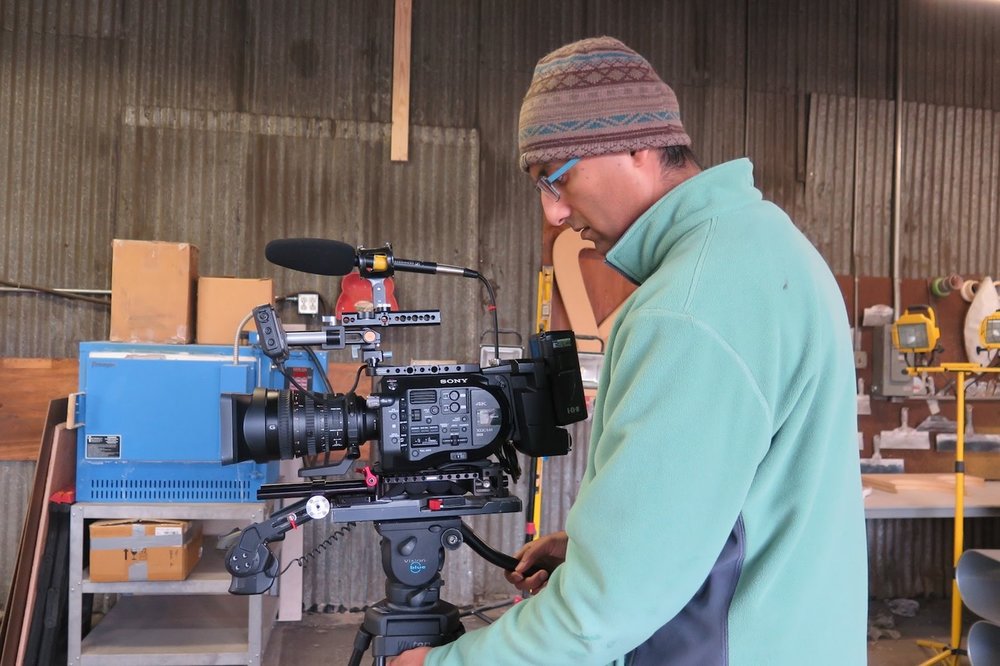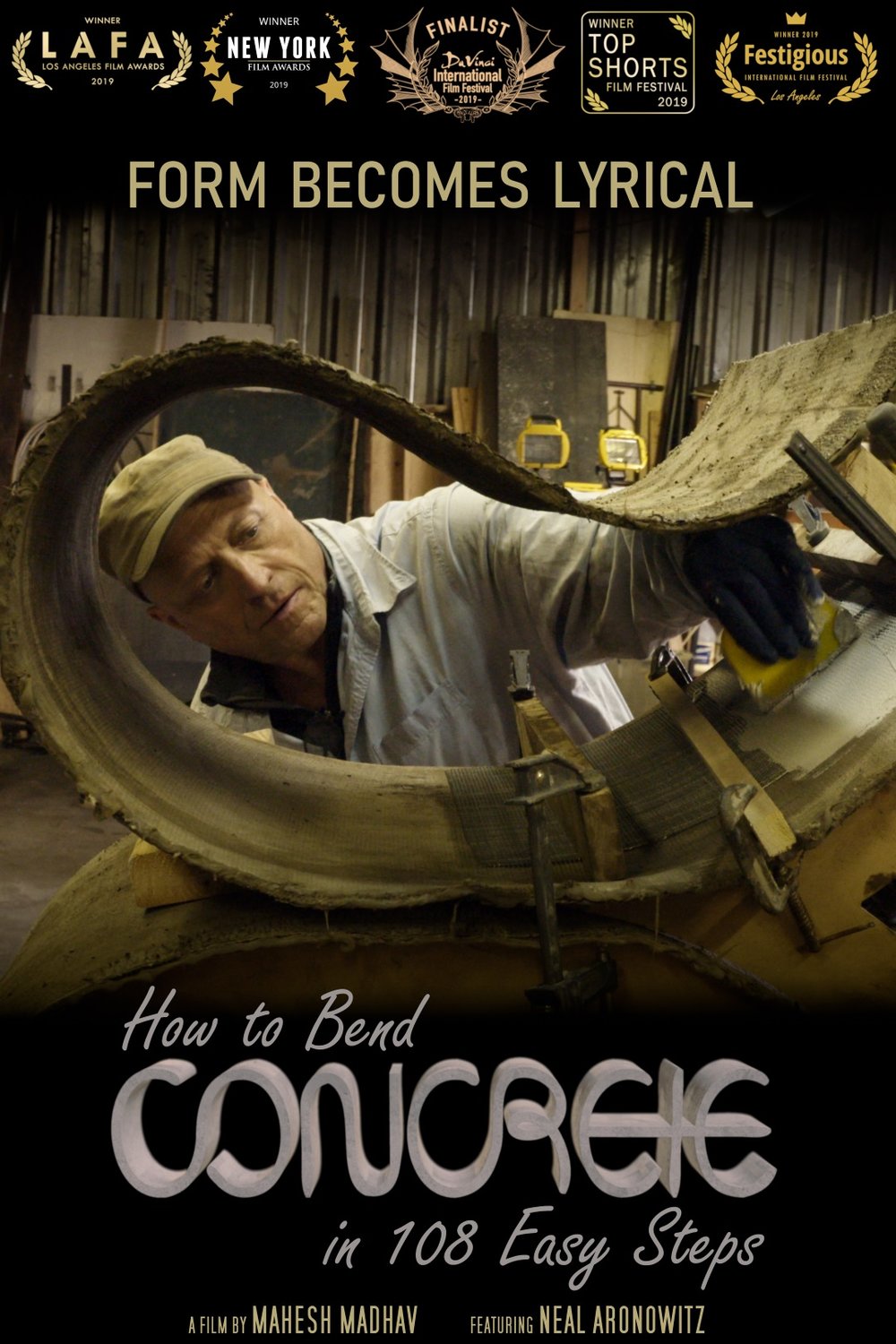
Mahesh Madhav filming How to Bend Concrete in 108 Easy Steps
When Mahesh Madhav set out to create his first documentary film, he envisioned a two minute project profiling innovator and designer, Neal Aronowitz. Around six months later, Madhav pieced together a 25 minute journey nodding to one’s integral passion to create, to then selflessly detach from one’s art to share it all with the world.

Madhav’s background is in engineering, but his pursuit of filmmaking comes from a desire to tell compelling, unique stories through a creative lens; ultimately drawing him to direct music videos and eventually, an almost half-hour long documentary that film festivals are taking notice of — the short has already been accepted into over five festivals and is still circulating.
After continuously running into Aronowitz several times around Portland, Madhav found a way to collaborate with the designer; the two discovered they shared a lot of common ground, including their artistic approaches.
“We kind of had the same ethos in our creative production, whether it’s the ideation process or the meticulousnesses. He’s [Aronowitz] very careful, he doesn’t want to expose a flaw to the public,” says Madhav. “In the same way, I had a bunch of footage and realized some of it worked and some of it didn’t. My problem became not ‘how do I craft a story’ but ‘what story do I tell?’”
Throughout the documentary, Madhav incorporates background music to ebb and flow throughout Aronowitz’s simple 108 step construction process. Licensed from Marmoset’s catalog, Madhav secured music rights for his film by utilizing the site’s search tool and functions.
“Part of the documentary filmmaking process was creating a soundtrack,” says Madhav. “There was this funny thing about how you spend 10% of your time making and editing the film, then 90% of the time searching for music.”
Madhav chalks up his timesaving abilities by referencing a song’s filters — being able to quickly see if a song exudes the right type of crescendo via its graphic icon.
“The Marmoset user interface is amazing because it lets you chop down thousands of possibilities to 30 songs,” says Madhav. “Also the ability to try out music without having the watermark is really great because Marmoset ends up giving a sense of trust to the filmmaker. It’s like ‘here’s the music for you to use, if you want to actually get it out there, you should license from us.’”

Designer Neal Aronowitz (left) and filmmaker Mahesh Madhav (right) speak after the film’s screening.
With his directorial music video background, Madhav honed in on perfecting his sound design mix, tackling the editing process himself. With the encouragement of another film director, Madhav finally submitted the film for a Best Sound Design & Editing nomination. And won.
“One of my mentors told me that the audience will forgive you if you have bad video,” says Madhav. “But they won’t forgive you if you have bad audio.”
The way Madhav immerses himself into his work mirrors the film’s very subject—Madhav and Aronowitz apply the same dedication to their work, investing themselves into every detail in order to feel confident in sharing it with others.
The documentary filmmaker offers some insight to his pursuit of precision and excellence in filmmaking. and why the craft offers him an equal amount of liberation.
“When my mom grew up in India, they had a dirt floor and there were like six kids. They would all share writing utensils, but pencils and paper were precious,” says Madhav. “And the eraser they would share eventually went to dust, so they went to their dad and said ‘look we ran out of eraser can you buy us a new one?’ and he said, ‘why do you have to make so many mistakes?’.”
This mentality of never wasting anything tangible carried over into Madhav’s upbringing, spurring his interest in digital media. “I found it very freeing because I’m not wasting paper or anything like that, I’m using bits or pixels and they’re purely ephemeral.”
Madhav’s How to Bend Concrete in 108 Easy Steps not merely captures an artist’s creative process, but demonstrates how to give the right amount of care, dedication and attention to something—to lend a piece of ourselves to a process just long enough, then being being vulnerable when inviting others into the room.
“This story is for any content creator,” say Madhav. “Like all content, you have to learn to let it go out into the world, to let others judge it. If they don’t like it or if they do like it, that’s up to them.”
Madhav’s film is currently being showcased internationally across festivals. His next local screening takes place on August 11th at 5th Avenue Cinema, get tickets and learn more here.
